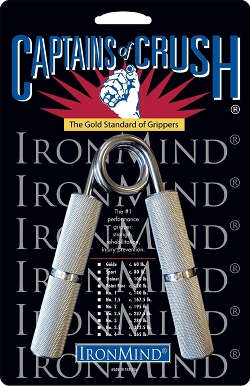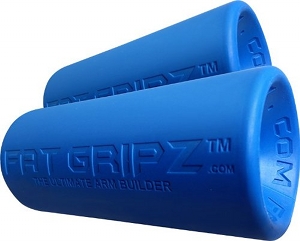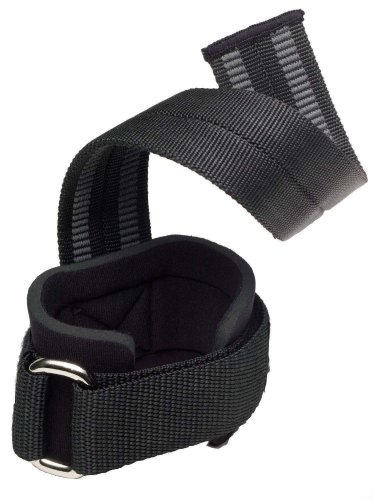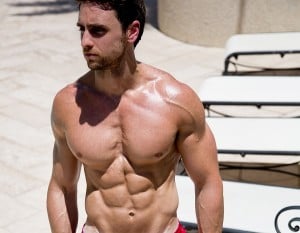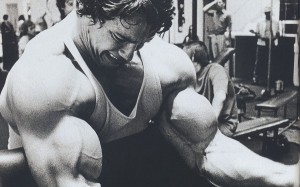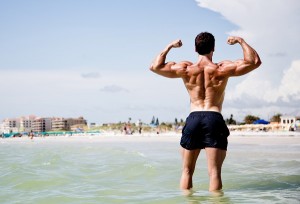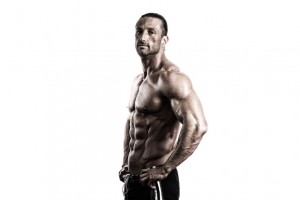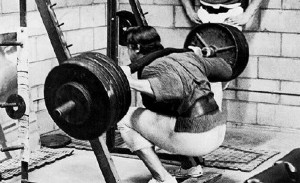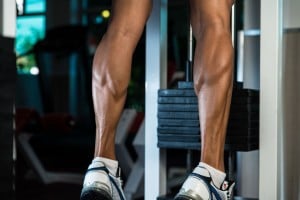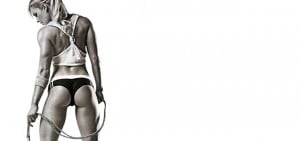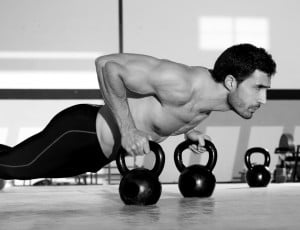When it comes to getting strong, grip strength is rarely thought about…but it actually plays a large role in your overall progress.
If your grip strength is lacking, you’ll not only have a lot of trouble with your back workouts (deadlifts, especially) and arm workouts, you’ll probably struggle with less-than-impressive looking forearms.
(I know because I used to have all three of these problems.)
Furthermore, by increasing your grip strength, you can progress faster in your chest workouts and shoulder workouts.
How?
It’s simple: by engaging your wrist and forearm muscles, like you will in the forearm workouts in this article, you’ll also engage all the other muscles in your arms, including your shoulders.
(A simple way to feel this is to hold your arm out in front of you and squeeze your hand into a fist as hard as you can. See how everything in your arm tightens?)
The bottom line is the better your grip strength, the better you’ll do in your weightlifting and the better your arms will look.
So in this article, I’m going to share with you the best forearm workouts for building Popeye-level grip strength.
Table of Contents
+
The Best Forearm Workouts for Increasing Grip Strength
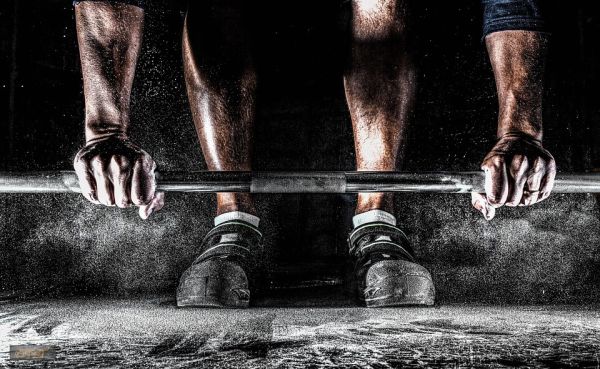
While your grip strength will naturally improve through a proper weightlifting program, there are quite a few grip exercises that you can do to speed up the process.
Below we’ll look at my favorite types of forearm workouts and how to put them together into an overall forearm training routine.
Hand Exercisers
One of the most effective ways to increase grip strength is to train your “crush grip,” which is simply the action of closing your hand around an object and squeezing. By training your crush grip, you build the strength and density of the bones and muscles of the hands, fingers, wrists, and forearms.
A hand exerciser is a great way to improve your crush grip. But not just any hand exerciser–you want one with enough resistance to be effective, but not so much that you can’t use a full range of motion (you should be able to fully squeeze the hand exerciser, not only partially close it).
Here are the two hand exercisers that I like and recommend:
Gripmaster Hand Exerciser
The Gripmaster is a good place to start training your crush grip. I also like that it allows you to train each finger independently, which comes in handy for strengthening the weaker links like the pinky and ring fingers.
I recommend starting with the medium tension (red), and once that’s easy, move up to the heavy (black).
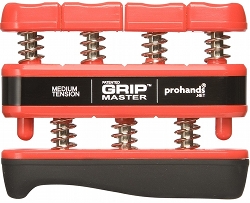
IronMind “Captains of Crush” Hand Exerciser
Once you’ve defeated the black Gripmaster, you’re ready for a “big boy” hand exerciser.
The “Captains of Crush” hand exercisers are great products. They’ve been on the market for about 15 years now and are quite popular in bodybuilding, powerlifting, and strongman circles.
You have 11 strength options to choose from, ranging from 60 lbs to an incredible 365 lbs. Most people find they need to start with the Guide or Sport models (60 and 80 lbs of strength required to squeeze, respectively), but if you’re an experienced weightlifter that can deadlift over 300 pounds for reps without straps, you can probably start with the Trainer model (100 lbs) and be fine.
How to Use the Hand Exerciser
Alright, so you have your hand exerciser. What now? First, let’s see how to properly set it into your hand for use:
Use the following tips to get the most out of it:
1. Start with 2 to 3 hand exerciser forearm workouts per week.
While the forearm muscles are very resilient, training them too frequently is detrimental. This is especially true if you’re also weightlifting.
So start with 2 to 3 forearm workouts per week and, over time, you should be able to work this up to 4 to 5.
2. Structure your hand exerciser forearm workouts correctly.
Start your hand exerciser forearm workouts with a few warm-up sets (I like to do these sets with the Gripmaster or even a cheap, lower-strength hand exerciser, like this), and then move on to your “heavy sets.”
After you’ve warmed up, you will do 5 to 6 sets of squeezes, with 8 to 10 squeezes per set. Rest 1 to 2 minutes in between each set. Once you can do 5 to 6 sets of 8 to 10 squeezes, you’re ready to move up to the next level of resistance.
As a note, a “special” type of squeeze that helps build strength is the “squeeze-and-hold” rep. This is where you fully squeeze the hand exerciser and hold it closed for 10 to 20 seconds (start with 10 and work up from there). I will often finish my sets with squeeze-and-hold reps.
3. Keep your form strict.
Like with any exercise, form is very important. And that means full squeezes (don’t start too heavy or you won’t be able to even get one full squeeze), and no twisting your arm or body to get additional leverage. Treat it like a proper weightlifting exercise.
Barbell Holds
The Barbell Hold is a great way to increase grip strength and it can be done at the end of any workout. It’s very simple:
I like to use a Power Rack and an Olympic bar, and make sure to use a double-overhand grip.
Go for 10 to 20 seconds of hold time per set and adjust your weight accordingly. Once you can hold a given weight for 20 seconds, add 10 pounds to the bar and work with that new weight until you can hold it for 20 seconds, and so forth.
The end of a back workout or arms workout is a good place to insert 1 to 3 sets of Barbell Holds.
Plate Pinches
Like the Barbell Hold, the Plate Pinch gives a great forearm workout and you don’t need anything special to do it. Here’s how it works:
Like the Barbell Hold, you’re going for about 20 seconds of hold time, and once you hit it, you increase the difficulty by adding another plate to pinch (3 instead of 2, and then 4, after which point I would go back to 2 plates of next higher denomination).
And again, like the Barbell Hold, 1 to 3 sets of Plate Pinches after your back or arms workouts is plenty. (You could do Barbell Holds after your back workouts and Plate Pinches after your arms workouts, for instance.)
Oversized Grips
Oversized grips are thick rubber grips that fit over barbells and dumbbells, and they’re an incredibly cost-effective way to improve your grip strength.
I like to use them on my big push exercises (Barbell Bench Press and Military Press, mainly), but not my pull exercises as they greatly limit the amount of weight you can pull (some people use them on warm-up sets only).
Here are the products I use and like:
Iron Bull T-Grip 2.0
The Iron Bull T-Grip 2.0 is comfortable and extremely durable and stays locked in place. You can’t go wrong here.
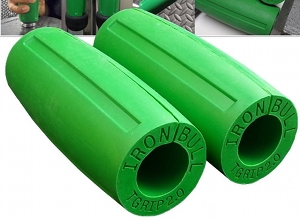
Fat Gripz
Fat Gripz are also popular and effective oversized grips.
I wouldn’t say either the T-Grip or Fat Gripz are better than the other–it’s just a matter of preference. Some people (like me) like the slight bulge in the middle of the T-Grip, whereas others don’t; and some people prefer the rougher texture of the Fat Gripz, whereas I don’t care either way.
Dumbbell Farmer Walks
The Dumbbell Farmer Walk is a tried-and-true grip strength builder. Here’s how it works:
Easy enough. Shoot for 30 to 40 feet walked per “set,” and once you’re able to move a given weight for that distance, move up.
Like Barbell Holds and Plate Pinches, Dumbbell Farmer Walks are great for ending a back or arms workout.
Weightlifting Straps
Purists shun straps as blasphemous and while I don’t disagree with that mentality, straps can be useful for improving grip strength if used properly.
The key is to not strap on your first set. Instead, work without straps until your grip is too fatigued to allow for a proper set, and then use straps.
Don’t go with just any straps, either–bad straps are more of a liability than a help. They can be overly tricky to wrap tightly, they can fail to hold their grip while you’re lifting, and they can seriously cut into your wrists.
Here are the straps I use and like:
Harbinger Big Grip “No-Slip” Lifting Straps
These straps rock. They have a padded wrist strap with a sturdy velcro clasp, so no awkward looping of the strap to get it to hold (this is the type that will shred your wrists), and they have two thin rubber tracks running down the inside of the strap, which grip the metal tightly.
Band Extensions
Last but not least on the list of forearm workouts are the deceptively hard Band Extensions.
This isn’t a grip exercise like the crush and hold exercises given above, but it helps prevent injuries and strengthen your overall grip by training your forearm extensor muscles.
You do Band Extensions by placing a band around several or all of your fingers and opening your hand and holding for 5 to 10 seconds (that’s one rep). You can finish each hand exerciser forearm workout with 1 to 3 sets of Band Extensions.
You can use a thick rubber band for this or can get bands especially made for it, like these:
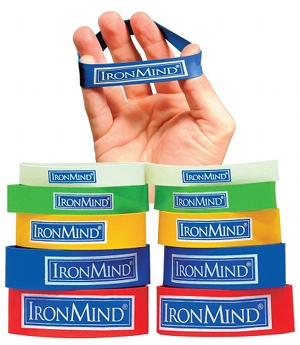
The Ultimate Forearm Workout Routine

Alright, now that we’ve gone over a variety of grip exercises, let’s turn them into something of a routine. Here’s what I recommend:
- Use straps on in back workouts if necessary, as described above
- End your back workouts with 2 to 3 sets of Barbell Holds or Dumbbell Farmer Walks (you can alternate between these each week)
- Use oversized grips on your push exercises
- End your arms workouts with 2 to 3 sets of Plate Pinches
- Do 1 to 2 hand exerciser forearm workouts per week, and include Band Extensions for bonus points, and as your grip gets stronger, you can increase this to 3 to 4 hand exerciser forearm workouts per week
If you do this routine, you will rapidly increase your grip strength, and will immediately notice the benefits in your bigger lifts. Happy forearm training!
Want More Workouts?
The Ultimate Chest Workout
The Ultimate Arms Workout
The Ultimate Back Workout
The Ultimate Shoulder Workout
The Ultimate Abs Workout
The Ultimate Legs Workout
The Ultimate Calves Workout
The Ultimate Butt Workout
The Ultimate Bodyweight Workout
